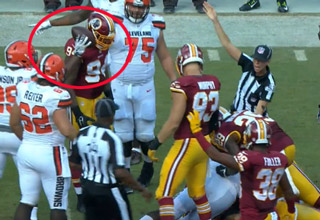
WNBA salaries have been a hot topic of conversation following Caitlin Clark’s selection as the number one pick in the WNBA draft, her signing with the Indiana Fever and the realization that all of the buzz surrounding her still only translates to her earning $338,056 over four years.
She’ll earn $76,535 in her first year, $78,066 in her second, $85,873 in her third, and have a fourth year option of $97,582. Meanwhile, the first pick in last year’s NBA draft, Victor Wembanyama, secured a $55 million four-year contract, making $12.1 million of that in his first season.
Naturally, people, particularly women, are annoyed about the disparity, for which there are a multitude of reasons, one unfortunately being that the WNBA doesn’t draw as many eyeballs, and thus, doesn’t attract the same lucrative sponsorships the way the NBA does. On the bright side, the 2023 season saw record-breaking viewership, attendance and engagement numbers, with the WNBA experiencing its highest total attendance in 13 years, so things could be looking up.
One Twitter user generated some conversation on the issue when she tweeted, “Decided to google WNBA salaries before the draft and I actually want to die what the hell,” which is a fair reaction. But as other users pointed out, it’s worth considering how many WNBA games you yourself have watched before lamenting the pay disparity, considering the sport’s success is largely predicated on how many viewers it can attract.
How many WNBA games did you watch last year? https://t.co/hPnGKuMOM3
— wanye (@wanyeburkett) April 16, 2024
At the end of the day, this is the answer.
— Sean Dunn (@seanldunn) April 16, 2024
If there are packed stadiums and millions of eyeballs for WNBA on ESPN, the athletes would be paid more. And the people complaining the loudest aren't filling seats in stadiums or signing up for ESPN.
Others jumped straight to accusing her of virtue signaling, with one person even searching her Twitter for mentions of the WNBA and coming up short. One Twitter user shouldn’t be the focus here, however; it’s understandable that women would be annoyed by the large pay disparity whether they love basketball or not. It just so happens that this is one area in which it’s relatively easy to vote with our wallets and check out some WNBA games, thus sending the message to advertisers that people want to watch and support this sport and its players.






12 Comments